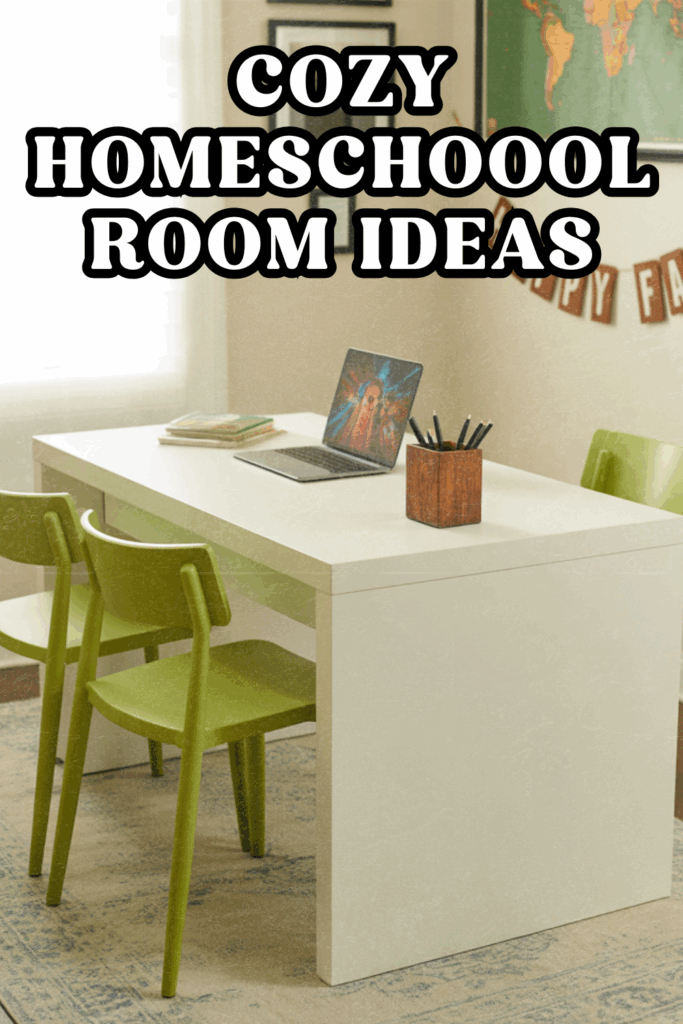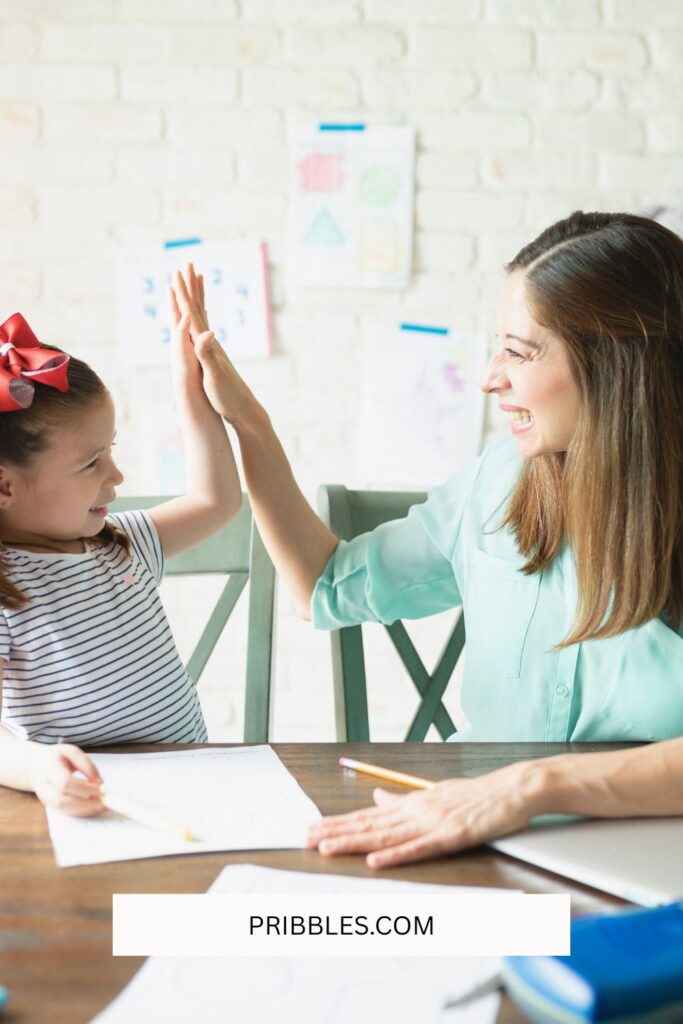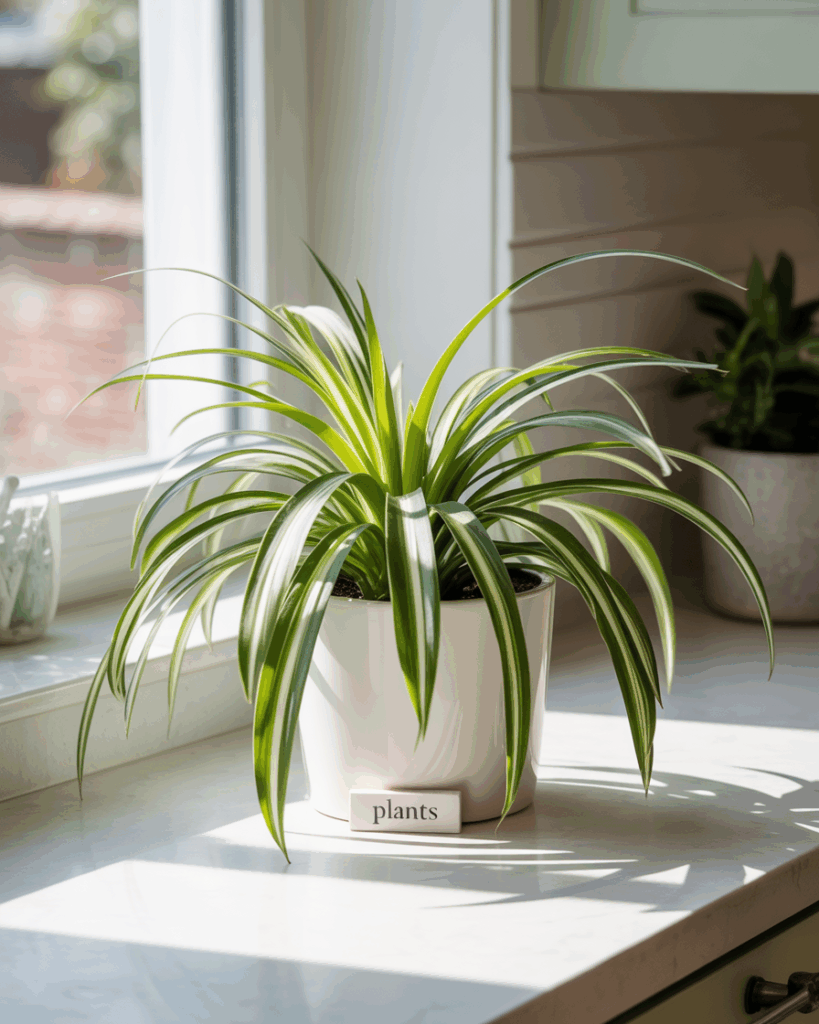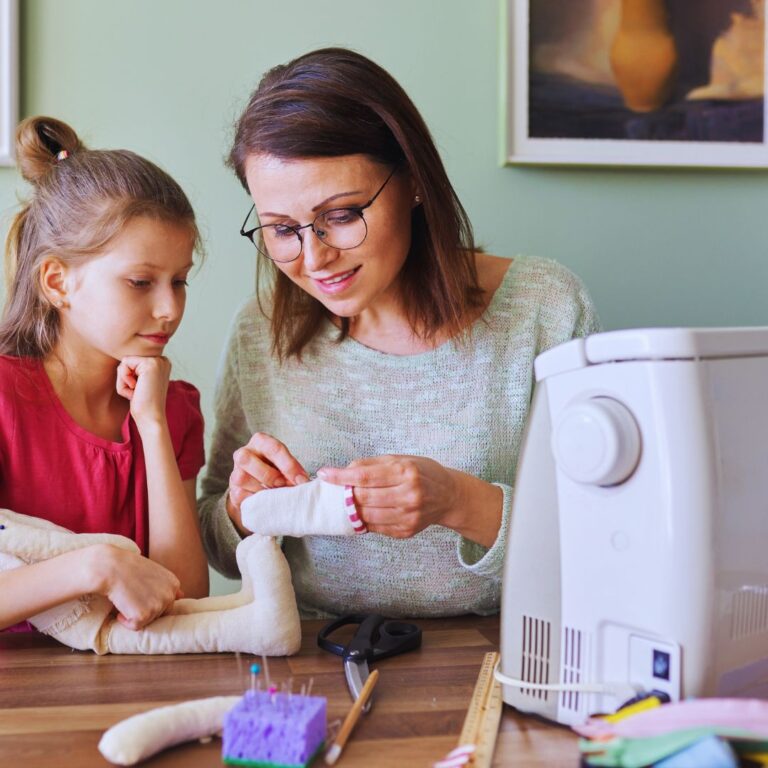Cozy Homeschool Room Ideas to Inspire Your Space
When you’re homeschooling, the environment you create matters just as much as the lessons you plan. A cozy homeschool room doesn’t need to look like a traditional classroom—it should feel warm, inviting, and inspiring. After all, learning happens best when everyone feels at home.
Pin for later

Affiliate links may be used in this post and if so I will receive a commission at no extra cost. I’m also part of the Amazon Affiliate (Associate) program where I earn a commission from sales made through my affiliate links. Read the full disclosure policy.
Whether you have an entire room to dedicate to homeschooling or just a corner of your living space, you can design it in a way that brings peace, comfort, and creativity to your family’s daily rhythm.
I was homeschooled myself growing up, and I still remember our sunroom that doubled as a schoolroom. The light streaming in, the stacks of books, and the cozy vibe made learning feel like part of life, not just schoolwork. That’s the beauty of creating a homeschool environment—it can be personal, comforting, and tailored to your family’s needs.
Below, I’ll share ideas and inspiration for creating a cozy homeschool room that fits your style, budget, and space.
Related reading: Homeschool Room Ideas: From Cozy Corners to Full Classrooms

1. Start With a Comfortable Foundation
At the heart of any cozy homeschool room is comfort. Think soft rugs, supportive chairs, and a welcoming table or desk setup. Instead of stiff school chairs, opt for something more homey—like a padded dining chair, beanbags, or even a cozy couch for read-aloud time. A soft area rug can define the learning space and make it feel warm underfoot, especially if your kids like to sprawl out with books or projects.
Pro Homeschooler Tip: Layer rugs if you can! A neutral jute rug underneath with a smaller patterned one on top adds both comfort and charm.
2. Embrace Natural Light
Nothing makes a room feel cozier (and more energizing) than sunlight. If possible, set up your homeschool area near a window. Not only does it brighten the room, but it also helps kids stay alert and engaged. Add sheer curtains to soften the light and give the room a warm glow, or string twinkle lights around the window frame for cloudy days.
If your space doesn’t get much natural light, bring in warm lamps with soft white or amber bulbs. Avoid harsh overhead lighting—cozy is all about creating a gentle atmosphere.
3. Mix Learning and Living
One of the best things about homeschooling is that it doesn’t need to look like school. Lean into that by mixing “home” elements into your learning space. For example, keep a basket of blankets nearby for snuggling during reading time. Add throw pillows to chairs or window seats. Display family photos alongside maps and educational posters.
This blend makes learning feel like a natural part of everyday life instead of something separate and sterile. It’s the balance of home and school that makes the space so inviting.
4. Use Warm, Calming Colors
Color has a huge impact on mood. For a cozy homeschool room, aim for warm, earthy tones or soft neutrals. Think sage greens, creamy whites, dusty blues, or warm beige. These colors create a calm backdrop and let the books, artwork, and supplies shine without overwhelming the space.
If your kids are younger, you can add pops of cheerful colors through storage bins, wall art, or a playful rug. The goal is to balance coziness with inspiration.
5. Create a Book Nook
Reading is often at the heart of homeschooling, so why not dedicate a cozy corner to it? A book nook doesn’t need to be elaborate—a small shelf, a comfy chair, and good lighting will do. Add some fairy lights, a soft blanket, and maybe a floor cushion or two, and suddenly you’ve created a space where your kids want to curl up with a story.
This corner can double as a quiet retreat when someone needs a break from schoolwork too.
6. Storage That Feels Inviting
Homeschooling comes with supplies—lots of them. But that doesn’t mean your room has to feel cluttered. The key is cozy storage. Instead of plastic bins, consider wicker baskets, wooden crates, or fabric bins in warm tones. Open shelving is wonderful for keeping books accessible while still looking tidy.
If you’re working with a smaller space, rolling carts are lifesavers. You can load them up with supplies and wheel them out of sight when not in use.
Bonus Tip: Label baskets and bins with cute tags—it makes things easier to find and adds a touch of charm.
7. Bring Nature Inside
Plants instantly make a room feel more peaceful and alive. Add a few potted plants to your homeschool room—succulents, ferns, or even a vase of fresh flowers on the table. If real plants aren’t practical, faux greenery still adds the same cozy effect without the upkeep.
You can also use natural textures like wooden furniture, woven baskets, and cotton throws to bring the outdoors in.

8. Personalize the Walls
Your homeschool room should reflect your family’s personality. Hang up kids’ artwork, inspiring quotes, or a large world map for geography lessons. Use corkboards or magnetic boards for rotating projects and achievements.
If you want to keep it cozy, avoid cluttering the walls with too many posters—stick to a few meaningful, well-placed items. That way, the room feels intentional and warm instead of overwhelming.
9. Add Multi-Purpose Surfaces
Flexibility is key in homeschooling. A large table can be used for writing, art projects, science experiments, and even family meals. If space allows, consider a smaller desk for independent work, but keep at least one shared surface for group activities.
Chalkboards, whiteboards, or even peel-and-stick wall decals can also serve as interactive surfaces for lessons without taking up much room.
10. Cozy Details Matter
Sometimes it’s the little things that bring a room together. Think scented candles (or battery-powered ones for safety), a cozy throw draped over a chair, a diffuser with calming essential oils, or seasonal touches like pumpkins in the fall and fresh flowers in spring.
These details create an atmosphere your kids will look forward to spending time in, which makes homeschooling feel more like a lifestyle than a task.
11. Budget-Friendly Cozy Touches
You don’t need to spend a fortune to create a cozy homeschool room. A few budget-friendly ideas:
- Thrift finds: Shop secondhand for baskets, chairs, and even bookshelves.
- DIY decor: Frame your kids’ art or make a homemade banner for the wall.
- Repurpose: Turn an old dresser into supply storage or use mason jars for pencils and markers.
- Blankets & pillows: You probably already have some on hand—bring them into the school space for instant coziness.
Sometimes the coziest rooms are the ones filled with meaningful, collected pieces rather than brand-new furniture.
12. Make It Yours
At the end of the day, the best homeschool room is the one that works for your family. Don’t feel pressure to make it Pinterest-perfect. Coziness isn’t about perfection—it’s about creating a space that feels nurturing, supportive, and joyful.
If your homeschool room has a soft chair, a good lamp, and a stack of books ready to be opened, you’re already halfway there. The rest is just layering in the personal touches that make your family smile.

Final Thoughts
A cozy homeschool room doesn’t have to be elaborate or expensive. With thoughtful touches like warm lighting, comfortable seating, natural elements, and personalized decor, you can create a space that encourages learning while feeling like home.
Homeschooling is a journey that weaves together life and education, and your space should reflect that. Cozy, warm, and practical—that’s the sweet spot.
So grab that throw blanket, pour yourself a cup of tea, and settle into a homeschool room that feels like the heart of your home.
“Education is not the filling of a pail, but the lighting of a fire.” – William Butler Yeats
Save this article on Pinterest!







